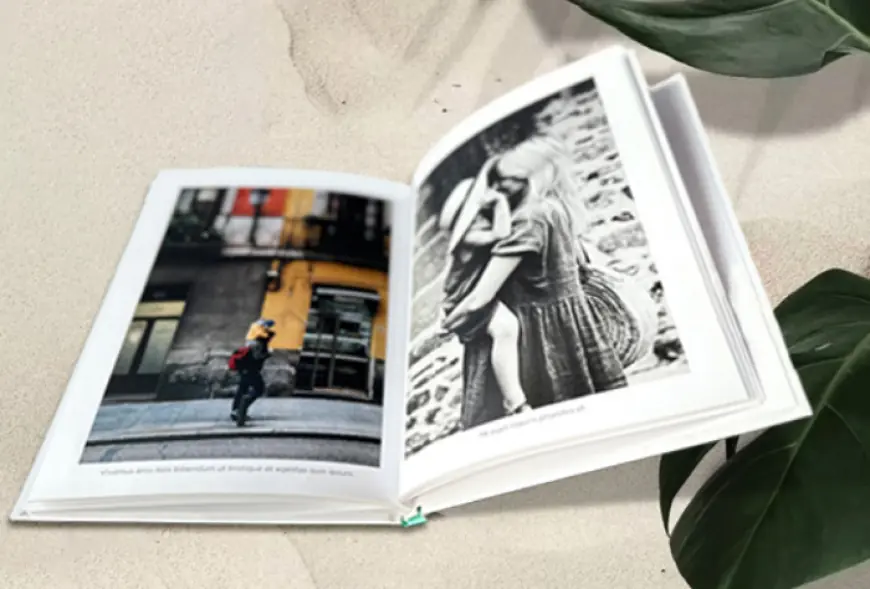Why Printed Memories Feel More Special Than Digital Ones
Why do printed memories hold more value than digital ones? Learn how tangible keepsakes create deeper emotional connections and lasting impressions.

In today’s digital era, our lives are captured in endless snapshots stored on smartphones, cloud drives, and social media platforms. While technology has made it easier than ever to take and share photos, it has also created a paradox: the more pictures we capture, the fewer we truly cherish. Scrolling through thousands of images in a gallery doesn’t quite evoke the same emotion as holding a tangible photo in your hands. That’s where the magic of printed memories comes alive.
Despite the convenience of digital storage, printed photographs continue to hold a special place in our hearts. They are more than just images—they are moments preserved, emotions captured, and stories immortalized. In this blog, we explore why printed memories feel more meaningful than digital ones and why physical photo collections, like albums and photobooks, continue to be cherished across generations.
The Emotional Connection Behind Tangible Memories
One of the strongest reasons printed photographs feel special is the emotional experience they create. A printed photo is something you can touch, hold, and pass around. It engages more of your senses than a digital image ever could.
When you flip through an album or a photobook, you’re not just looking at pictures—you’re reliving the moment. Each image becomes a portal to the past, allowing you to recall sights, sounds, and emotions vividly. There’s an unmatched warmth in holding a photograph, feeling its texture, and knowing that this moment has been preserved forever.
The Timelessness of Printed Photos
Technology changes rapidly. Smartphones get upgraded, software evolves, and file formats become outdated. What’s stored on your device today could become inaccessible tomorrow due to hardware failures or obsolete storage methods. Digital memories, while convenient, are inherently fragile.
Printed photos, on the other hand, stand the test of time. A well-preserved album can last decades—even centuries—allowing memories to be passed down through generations. There’s something deeply comforting about knowing that your most cherished moments won’t disappear with a forgotten password or a corrupted hard drive.
Why Digital Memories Often Get Lost
It’s estimated that an average smartphone user clicks thousands of photos every year, but only a handful ever get printed. This abundance often leads to digital clutter, where precious memories are buried among random screenshots, selfies, and repetitive clicks.
Unlike printed photographs that hold a dedicated place on a wall, in a frame, or in an album, digital images are easy to forget. They exist, but they rarely demand your attention. Years later, it’s not uncommon to lose track of significant moments simply because they’re lost in endless digital folders.
Printed Memories Tell Better Stories
There’s a narrative element to printed photographs that digital galleries often lack. Curating physical albums forces us to slow down and be intentional about the memories we preserve.
When creating a photo album or exploring photobook printing, each image is chosen carefully, arranged thoughtfully, and complemented with captions or designs that tell a story. This process transforms photos into a cohesive narrative, making the act of revisiting them far more meaningful.
Unlike endless scrolling, turning pages in a physical book encourages deeper engagement. Every flip becomes a journey through time, connecting past moments in a way that random digital collections can’t replicate.
A Shared Experience That Digital Lacks
Printed photos foster connection. Families gather around albums, friends pass photographs across a table, and grandparents share stories while flipping through pages of cherished memories. These shared experiences create moments within moments—memories born out of revisiting old ones.
Digital images, while easy to share online, are often consumed individually and passively. They’re viewed in fleeting moments, liked, and quickly forgotten. In contrast, holding a photograph invites conversation, nostalgia, and storytelling. Printed memories encourage us to slow down and connect—not just with the image but with the people around us.
The Role of Personalization in Printed Keepsakes
Printed photographs have evolved far beyond simple prints. Today, you can create personalized photobooks, wall art, calendars, and even custom frames. This level of customization transforms ordinary photos into extraordinary keepsakes.
Personalization makes memories more meaningful. Adding dates, captions, or anecdotes alongside photos creates a deeper connection between the memory and the viewer. It turns a simple picture into a curated experience—something thoughtfully designed and intentionally preserved.
The Sensory Appeal of the Physical
One of the biggest advantages of printed photographs lies in their tactile nature. Digital memories live on screens, which feel cold and impersonal. Printed photos, on the other hand, engage multiple senses:
-
Touch: The texture of the paper, the smoothness of a glossy finish, or the richness of a matte coating creates a unique sensory experience.
-
Sight: High-quality prints capture colors and details differently, making images feel more alive.
-
Smell: For many, even the faint scent of ink or aged paper evokes nostalgia and warmth.
These subtle but powerful sensory connections enhance the emotional value of printed memories, making them irreplaceable in a digital-first world.
Preserving Heritage and Legacy
Printed photographs aren’t just about the present—they’re about the future. They create a bridge between generations, enabling families to pass down stories, traditions, and emotions in a tangible form.
Imagine a grandchild flipping through a decades-old wedding album, feeling connected to relatives they’ve never met. Printed photographs allow us to preserve not just images but heritage—offering future generations a glimpse into their history and identity.
Finding Balance Between Digital and Physical
The point isn’t to choose between digital and printed memories but to understand their distinct roles. Digital photos are convenient for storing, sharing, and capturing spontaneous moments. But printed photographs give depth, permanence, and emotional weight to the memories we value most.
By curating a selection of your most treasured images and preserving them in thoughtfully designed albums or photobooks, you create something timeless. Investing in high-quality printing ensures that your memories aren’t just stored—they’re celebrated.
Conclusion
In a world overflowing with digital images, printed memories stand out because they feel personal, lasting, and meaningful. They transform fleeting moments into tangible treasures and elevate the act of remembering into an experience worth cherishing. While technology continues to evolve, the human connection to physical keepsakes remains timeless.
Printed photographs invite us to pause, reflect, and connect—with our memories, our loved ones, and ourselves. They offer something digital images simply can’t replicate: a sense of permanence and presence. Whether it’s through classic photo albums or modern photobook printing, preserving memories in physical form ensures that the stories of our lives are never forgotten.
FAQs
Q1. Why do printed memories feel more special than digital ones?
Printed memories create a tangible connection, engage multiple senses, and last for generations, making them more meaningful than fleeting digital images.
Q2. How do printed photos enhance emotional value?
Holding a photograph evokes nostalgia, strengthens storytelling, and creates lasting emotional bonds that digital screens often fail to deliver.
Q3. What’s the benefit of creating personalized photobooks?
Personalized photobooks curate your most important memories into a thoughtfully designed narrative, making them easier to revisit and share.
Q4. Should we print all our digital photos?
Not necessarily. Printing select, meaningful images ensures that the most cherished memories are preserved in a way that stands the test of time.
What's Your Reaction?
 Like
0
Like
0
 Dislike
0
Dislike
0
 Love
0
Love
0
 Funny
0
Funny
0
 Angry
0
Angry
0
 Sad
0
Sad
0
 Wow
0
Wow
0



















































